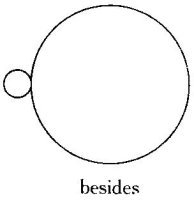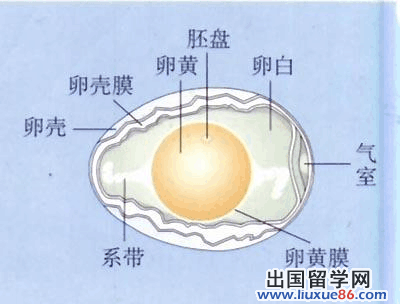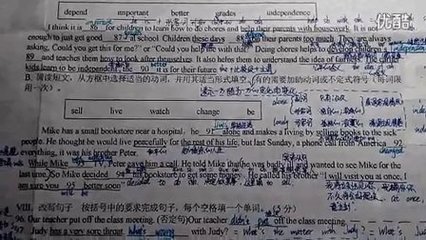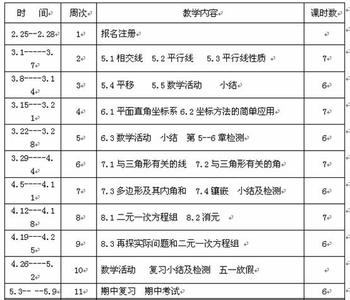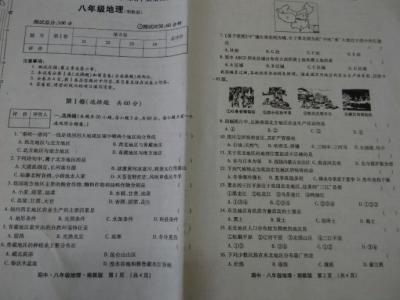新目标英语八年级下学期重点短语与句型10
一、短语与句子
Unit 10 It’s a nice day, isn’t it?
1._____________________浏览 2._____________________在周末
3.______ noon到下午止 4. Sth. ________sb. some money 某物花某人多少钱
5.Sb. ________ some money ________sth. 某人为某物付多少钱
6.Sb. __________some money __________sth. 某人花多少钱在某物上
7.Sb. spend some time_______ ________ sth. / ______ sth.
= It _______ sb. some time _______ _______ sth. 某人花费多少时间做某事
8.______________对某人友好 9.____________ 至少
9.It looks like _______, doesn’t it ? (rain, rainy, raining , to rain?????)
10. I hope so . 希望如此 (类似:I think so , I am afraid so )
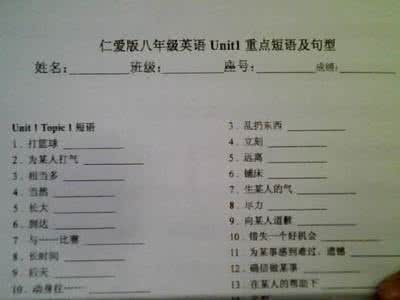
I hope not 希望不要(会) (类似:I don’t think so , I am afraid not )
11.wait _________ sth. 等着做某事 12. feel like +名词 感觉像…..
13. Their prices are really ________ / _________. (低/ 高)。
The pen is very ____________/ __________. (昂贵/ 便宜)
14. 问物体价格:
---How much +be + 物体? --- 物体+ be +价格。
---How much +do / does / did +物体+cost ? ---物体+cost(s) + 价格。
---What is the price of +物体? --- The price of +物体 +is +价格。
15.____________(意外地)出现,来到
16. _____________well / badly _____sb. 和某人相处融洽/ 糟糕
17. _____________至少 18. thank—you note 感谢信
19. both …..and …..二者都(当其连接的部分作句子主语时,表复数概念,如:Both she and he are good students.)
二、重要单词
1、noon ( at noon在中午,by noon 在中午之前) 2、sandy (形容词)---sand (不可数名词:沙)
3.low(与high 相对,描述temperature, price ) 4. traffic (不可数名词)
5. slow (形容词;做副词,用于动词后) ---slowly (副词,用于动词前或后,还可置于句首)
其他重要单词:goodbye , cross, elevator, fan , note , baby , review
三、语法:反意疑问句
(一)、用途:反意疑问句是指问话人对自己的观点不完全肯定,需要别人来加以证实。
(二)、构成:反意疑问句是由一个简单的陈述句和一般疑问句构成,中间用逗号隔开。例如:
1.You weren’t at home yesterday,were you?(你昨天不在家,是吗?)
2. She likes cakes,doesn’t she?(他喜欢蛋糕,不是吗?)
注意事项:
(1).反意疑问句在结构上,肯定和否定相对立。如前一部分为肯定的陈述句,后一部分则用否定的一般疑问句。如前一部分为否定的陈述句,后一部分则用否定的一般疑问句。
例如:1.They are going to Shanghai ,aren’t they?( 他们打算去上海,不是吗?)
2.You don’t like bananas,do you ?(你不喜欢香蕉,是吗?)
(2).反意疑问句的回答是根据事实而做出的。如事实是肯定的用“Yes”回答,事实是否定的用“No”回答。反意疑问句的答语分两部分,前一部分是说话人对看法的判断,后一部分是根据事实做出的回答。
例如:1.He is in Class 4,isn’t he?(他在四班,不是吗?)
事实是肯定的,答语是:Yes ,he is .是,他是。 事实是否定的,答语是:No,he isn’t.不,他不是
2.They didn’t go to Beijing ,did they?他们没去北京,是吗?
事实是肯定的,答语是:Yes,they did .不,他们去了。
事实是否定的,答语是:No,they didn’t.是的,他们没去。
(3)在反意疑问句中,附加疑问句的主语要用相应的代词,当陈述句的主语是this,that,something ,everything ,nothing ,和动词不定式(短语),v.—ing(短语)等时,附加疑问句的主语应为it . 例如:1.This is a good book ,isn’t it ?这是一本好书,不是吗?
2.Reading in the sun is bad for your eyes,isn’t it?在太阳下看书对眼睛有害,不是吗?
(4)当陈述句someone(somebody),anyone(anybody), everyone(everybody)等不定代词时,附加疑问句的主语在书面语中用he,在口语中往往用they. (常用they居多)
例如:Someone went home ,didn’t he/they?有人回家了,是吗?
(5)当陈述部分含有hardly, seldom, few, little, none, never, nothing, no, nobody, neither, too….to….等表示否定意义的词时,疑问部分应用肯定形式。
例如:1.Nothing is wrong with my bike ,is it? 我的自行车没有毛病,是吗?
2.There is little water in the bottle ,is there? 瓶子里几乎没水了,是吗?
(6)祈使句的反意疑问句,用will you,但是如果是Let’s ………,则用shall we? Let us ……,则用will you ?
(7)、There be 句型的反意疑问句部分的主语为there.
如:There is some break on the plate, isn’t there ?
(8)、特殊的宾语从句:当主句的谓语动词为think, suppose, believe,主语为I, We 时,反意疑问句部分的主语和时态与从句保持一致。
如:I don’t think chickens can swim, can they ?
I believe he will come on time , won't he ?
四、辨析
cross , across, through
cross, 动词,“穿过,横越”,强调从一定范围的一边(岸)到另外一边(岸),而且在物体的表面上“穿过”。
across, 介词或副词,“穿过,横越”, 强调从一定范围的一边(岸)到另外一边(岸),而且在物体的表面上“穿过”。常与go , walk, run , rush 等连用,相当于cross。
through,介词或副词,“穿过”,表示从某一范围的一端到另一端,但它表示动作是在内部空间进行的,往往指穿过沙漠、森林、窗户、门等。常与go , walk, run , rush 等连用。
Go ________slowly the bridge! ( cross, across, through ???)
Don’t go ________the street! ( cross, across, through???? )
The man walked _______the gate quickly. ( cross, across, through???? )
 爱华网
爱华网